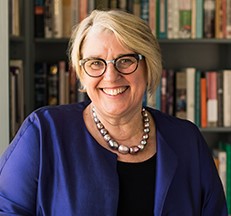
Demonstrators gathered last week at Boise State University to protest comments by political science professor Scott Yenor, who spoke critically of women in higher education and of feminism, stating at a conference that programs such as engineering, law and medicine should stop recruiting women and instead prioritize the enrollment of men. Yenor’s remarks were made in late October but went viral last week after being posted on social media.
When Yenor made his disparaging remarks about women, he followed a long history of powerful men using their platforms to argue against any social change that might imperil their intellectually indefensible positions.
As a professor, Dr. Yenor has every right to express his opinion; academic freedom is as unassailable a right in higher education as free speech is in the larger world. However, the freedom to express oneself does not insulate from response.
As president of America’s oldest Seven Sisters college, I am reminded by Yenor’s remarks just how vital and relevant our mission is. The mission to promote gender equity and to educate more women in science, technology, engineering and mathematics (STEM) is critical for the advancement of those fields and for the new perspectives and approaches that these highly accomplished scientists bring.
Retaining historically underrepresented researchers in STEM depends on a sea change in the culture, on new scholars seeing themselves in their peers, mentors and leaders. The evidence for the success of this model—and the need to push for more, not less, inclusion—is clear. At Mount Holyoke, 34 percent of our students major in STEM. According to NSF data, between 1970 and 2019 Mount Holyoke produced more graduates classified as female who earned their PhDs in STEM fields than any other liberal arts college.
However, as Mount Holyoke and other institutions interrogate and change the culture around recruiting and retaining women and other historically excluded individuals in STEM, there’s more to be done to champion equity and inclusion in those fields.
In the STEM workplace, women are regularly harassed. Nearly half of female medical students in one 2018 survey said they had been harassed by faculty or staff. In another, from 2014, 64% of field scientists who responded reported sexual harassment while doing fieldwork. Former Mount Holyoke professor Andrea Foulkes’ research shows that women comprise less than a quarter of editorial board members of prestigious journals in statistics and biostatistics, even though women have received more than 40 percent of the doctorates awarded in the fields for the past 17 years.
Also disheartening is the fact that, in the life sciences, once women earn their Ph.D., they receive only 39 percent of postdoctoral fellowships and 18 percent of professorships. The more decorated a male scientist is, the fewer women he trains, and many institutions hire their faculty from the labs of these elite men.
The answer to Yenor’s unspoken question, ‘Why don’t women seem to want to be in the sciences?’ lies in the very attitude that he uplifts. The viewpoint that gender diversity has no place in STEM fields runs deep—but as students and alums of women’s colleges continue to demonstrate, it can and must be uprooted.
Sonya Stephens is president of Mount Holyoke College.

